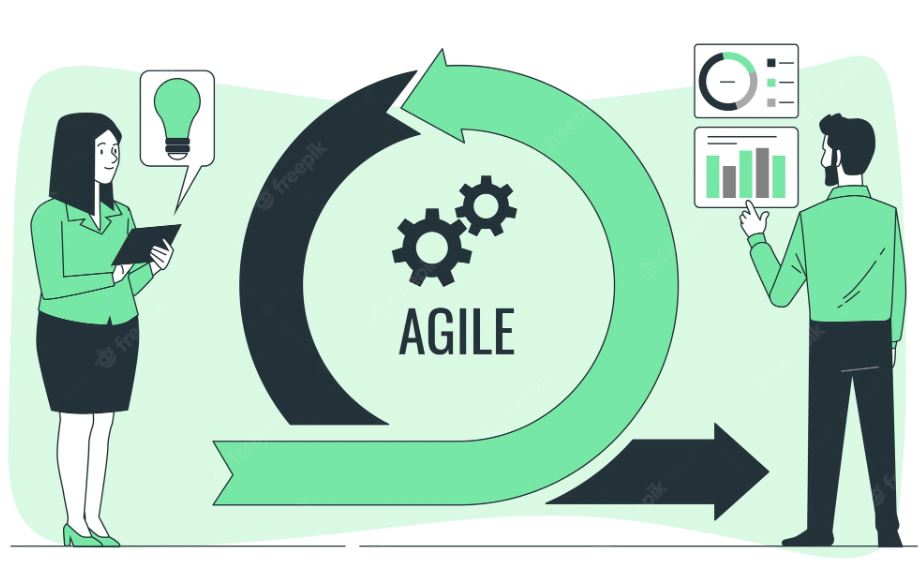Table Of Content
Learn the Importance of Building a Strong Agile Development Team Structure
Software development requires teamwork because it helps to divide different tasks between the members efficiently. This is not just a theoretical perception, but a tried and tested method that has always given quality results. However, to build a team, you must need to know some models that are considered best for development such as agile methodology. It has now become a proven practice to handle all types of software projects efficiently. The knowledge about agile development team structure is therefore very important, as it enables you to build a team that can work with agility on various types of software applications.
It is quite a fact that software systems can’t be developed efficiently if there is no process in place. Same theory is valid for the team structure, as you cannot work on any project if you do not have a proper team in place. Today, agile methodology is preferred more for software development, hence your team should also be made and structured according to that. It helps to form an authority-based layer in the team that provides everyone a good control on several things. People can also communicate better with agile development team structure, as long as it is implemented in a proper sense.
In this article, we will discuss briefly about agile development team structure, as why it should be formed to develop different software projects efficiently. So, let us first start from the basics understanding the need of agile methodology in development. This will let us know the core importance of agile in developing advanced software systems.
What is Agile Methodology?

Agile methodology refers to a process that allows development teams to work on any project with smart collaboration. It has become the go-to method for many teams due to offering great results. The methodology comes specifically handy in the development of advanced projects, such as ERP software, enterprise level applications and more others. These projects are quite technical as well as take a lot of time for completion. They require a smart method that can be scaled and customized at any point. The agile methodology helps to fulfil that need, allowing developers to collaborate and execute different tasks efficiently.
Compared to the conventional development methods, agile methodology allows teams to build their processes as per the requirements. This custom approach makes the agile method highly useful in handling critical projects. From managing timelines to designating different tasks, agile method helps teams to customize different things so that they can get a definite outcome as per the given requirements. It can be said that agile method ensures to offer software development services with a streamlined approach, that too without missing any important details.
Importance of Agile Methodology in Development

Agile methodology is considered very important for software development. It is a new approach that gives ease to the development teams to choose their processes as per the given needs. They are not bounded in any limits, as agile makes sure to give them a complete autonomy in terms of managing different tasks freely. This approach works well for many teams, because they want customization and scalability at certain stages. They cannot restrict themselves in predefined processes, as the project complexities often demand out of the box development strategies.
By using agile process, development teams get the flexibility to prioritize different types of tasks. This is a very important advantage that helps to perform various crucial tasks quickly. It lets the team decide which task should be done immediately, so that urgent requirements could be met. This is one of the core advantages of agile methodology that makes it stand out among the other processes.
The agile development team structure specially emphasize on this fact. It ensures to formulate teams in a manner that everybody can handle sudden tasks efficiently. Besides that, agile method also ensures to complete projects with proper testing. The closely rounded testing mechanism of agile method is designed to test every component with complete proficiency. It does not leave any loophole in the system, so that every product feature can function without any disruption.
What is Agile Development Team Structure?

The agile development team structure refers to a setup in which people are given different specialized responsibilities in the team. This is precisely done to make an all-rounded team that can manage all the agile operations effectively. It is not like having just developers in the team, but different types of professionals that are expert in various areas. It provides complete proficiency to the team in agile functions, allowing them to execute every process and practice with complete control.
Having agile development team structure in place enables you to organize whole project quite smartly. The flexibility provided by this structure is unmatched, as it forms the core basis of the agile model. That is the reason why teams find the management of tasks more easy with this model. They understand how to distribute different tasks on the basis of team skills and expertise. It not only simplifies execution, but also ensures to complete the given jobs within a specific time period.
Roles in Agile Development Team Structure
Roles in agile development team structure are divided on the basis of expertise and project’s functional requirements. The classification of these roles is different from the general practice because they usually operate with a specialized set of responsibilities. If you do not have much knowledge about them, take a look at the definition of different agile roles defined below.
Product Owner
Product owner (PO) is used for that person who is considered major stakeholder in the project. He is the exact guy who is thought to be reporting directly to the clients. In general terms, you can consider product owner as the real manager of the project. He is involved in the development and other activities from start to finish. Though he will not be directly working on different things, but will be keeping track of the status of various tasks. It is his responsibility to ensure quality in the outcome, as clients or business higher-ups will ask questions directly from him.
Talking about the directives of product owner, he provides long/short term guidance to every team member about project development. He lets them know about the project deadline, as well as what type of features should be precisely developed in the application. That is wat makes him the real manager of the project who gives instruction to everyone how to work on the development as per the given requirements.
Scrum Master
Before talking about scrum master, we must need to first understand what scrum is. Putting it simply, scrum is a practice that helps agile teams to organize different tasks effectively. It assists them to devise their own plans and work according to them to achieve the required goals. Whether it is about designating tasks or defining timeline, scrum methodology helps to do everything with a very smart strategy. Those teams that are looking to adapt agile process, must need to learn about scrum as it forms the bases of agile software development team structure.
Now coming to the scrum master, it is basically a job role that is given to the person who is responsible to execute scrum methodology in the team. He is the one who take regular update from the team, and implement different processes that helps everyone to complete different project tasks. The scrum master also divides development into different phases, so that teams can focus on précised objectives within each sprint.
Development Team
Well, this term is easily understandable to everyone because it refers to that team which is directly working on the project. A software development team includes professionals with different skills and expertise. They are given different types of tasks according to their proficiency, so that each software component can be developed in a specialized manner. The development team stays in contact directly with the product owner, as he provides guidance to them in different areas of software development.
Due to being involved directly in the development, the team takes a decent amount of time for research, brainstorming and development of the project. It is understandable that all of these phases are necessary because they help to take the project forward in a right manner. The scrum master manages the designation and allotment of tasks, so that equal level of participation can be established within the development team.
QA & Testing Team
We all know how crucial quality assurance is for any project. It ensures to check and validate the applications as per the given quality checklist. The QA testing team is therefore specifically established within the agile development team structure to look out these tasks. They are responsible to check every software code and component with an eagle eye, so that a proper report can be obtained about the efficiency of product features. If errors and loopholes are found during the execution, the QA team is responsible to directly report all the bugs to the development team.
Similarly, the security testing team is also instructed to validate everything related to security in the application. Nowadays, security has become a main talking point in the digital world. Companies are now paying extra attention to solidify their websites, so that the threat of cyber-attacks can be minimized. This makes the value of security team very important, as they ensure to produce systems that are made with failsafe security protocols.
Final Words
That brings us to the end of this blog in which we have discussed about agile development team structure in detail. It is certainly very important to work in a systemized manner while developing any software application. It helps you to organize different things, and complete important tasks as per the given requirements. For beginners, this article would be prove to be a good read, as it has defined how agile team development structure is formed precisely. They will understand how agile helps teams to work closely and achieve the required goals together.
Meanwhile, if you are looking for a company that can assist you to develop quality software systems, get in touch with us today. We are well experienced in developing all types of software solutions, rightly as per the given custom demands.
Frequently Asked Questions (FAQs)
| What is agile methodology? Agile methodology refers to a process that helps teams to work with a customized approach. It is very effective in making iterative decisions wherever needed to ensure top quality features in the project. |
| What is agile development team structure? Agile development team structure refers to a formation made according to the practices of agile. In this structure, every person is responsible for a designated job that fits best according to his/her expertise. This makes the team very much specialized as well as organized in every sense. |
| How does an agile team work? The working method of an agile team is very smart and effective as compared to conventional teams. They usually prioritize tasks as per the emerging requirements, so that everything can be managed timely. |
| What are the different agile team structure roles and responsibilities? Agile methodology defines different roles and responsibilities within the team. It helps to form a structure in which every person is specifically responsible for a given job. This includes different roles such as product owner, scrum master, product delivery manager and more others. |
| What are the responsibilities of a product owner? Product owner, often known as PO, is responsible to look after the project as a whole. He is basically the manager who keeps track of everything, as well as stays regularly in contact with the team to discuss various tasks related to the project. |
